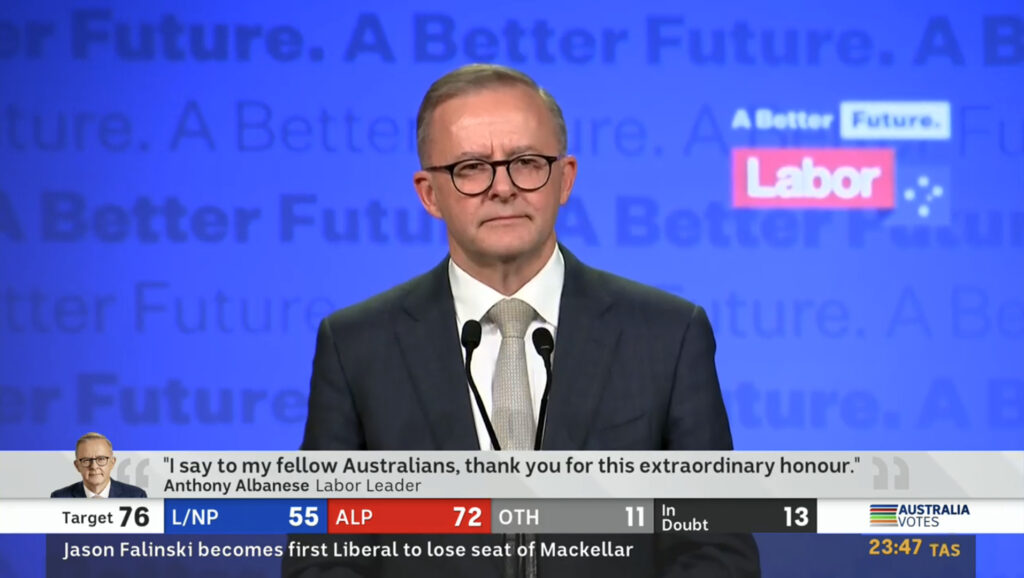Labor in Power
It’s been just two weeks since Anthony Albanese and the Australian Labor Party won the federal election but their government is already facing challenges.
It always seemed like quite a conundrum for the Australian Labor Party (ALP). In the 2019 election under Bill Shorten, the ALP promoted a reform agenda that was almost Whitlamesque in its ambition. For the “true believers”, it was bold, brave and everything that the ALP should be. But the electorate rejected it and Scott Morrison’s Liberal Party went on to win another “miraculous” term in government.
This time round, the ALP tried an old tactic of Kim Beazley’s from the 2000’s – albeit a failed one – the “small target” approach; nothing bold, nothing controversial. And most of all nothing that would spook the horses. The left desperately wanted the Liberal Party voted out of office, but they also wanted a Labor Party that would actually achieve something. Surely if the ALP won office of the back of the “small target” strategy, it would make an unfortunate precedent?
As it happens, the “small target” approach worked this time and Anthony Albanese won government for the ALP. Time will tell how effective his government will be.

Unlike in 2007 when Kevin Rudd won government for Labor, there was no widespread enthusiasm for the new prime minister this time. Rather, it seemed, people just wanted a lazy, underachieving and increasingly corrupt Liberal government out. The high number of votes going towards “teal” independents, the Greens and other minor parties at this election points to trend away from major parties. Anthony Albanese’s Labor government have barely scraped-in with a 1-seat majority.
If the ALP performs well in its first term of office and Anthony Albanese can demonstrate capable leadership with tangible outcomes for the public, they might be able to increase their majority at the next election. Failing this, I’d expect more votes to move away from the major parties.
Either way, there’s been no ‘honeymoon’ for this government.
The current gas crisis hit almost as soon as the government was sworn in. The absence of legislated quotas for local supply has caused a domestic shortage of gas despite Australia being the world’s largest supplier. This failure of regulation and foresight by various governments means that our manufacturers will suffer and households will likely experience massive energy price rises when inflation is already sitting at 5.1% pa. This won’t serve the new government well unless it is quickly dealt-with.
The Labor Party campaigned hard on “cost of living” and wages, along with climate change, and the establishment of a Commonwealth anti-corruption commission.
On the environment, there will be significant pressure for Labor to better its commitment to cutting emissions by 43% by 2030. This push may come from the “teals” and the Greens. As far as cost-of-living goes, interest rates are rising fast as the Reserve Bank seeks to curb inflation and this may affect some mortgagees, although a successful lifting of wages will assist with this. The only piece of “low-hanging fruit” for this new government is the anti-corruption commission.
The government has been notably busy repairing relations in the Pacific and in this regard, they’ve made a good start.
The new government will need to be decisive in the way that it manages the gas crisis before too much damage is done to the economy and households. They’ll also have to navigate some very challenging economic waters in the months ahead.
Comments
No comments have yet been submitted. Be the first!